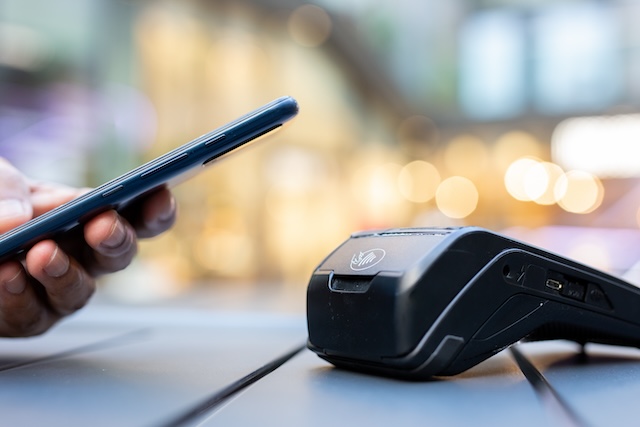Digital is big business at Fashion Week. Catwalk shows are entertaining spectacles verging on theatrical performances, and the introduction of digital technology has enhanced the way designers display their collections as well as the audience’s experience – whether they’re sitting on the front row or in the brand’s Oxford Street store.
So introducing new technology would not be difficult for any Fashion Week – these are people that embrace new trends and want to stay ahead of the masses in every way. Technology shows no signs of slowing down the fashion industry.
Security benefits
London Fashion Week (LFW) tickets are highly coveted. The rich, famous and glamorous expect an invite from their designer friends, but your average fashion victim would give the right Armani mule to get a seat – even a standing position.
>See also: What the retail sector can learn from London Fashion Week's tech innovation
Although you might not expect the same counterfeit ticket activity and ‘pass-backs’ that you see at music events on such a high-brow occasion, it’s still possible.
RFID wristbands can prevent this fraudulent activity and help with LFW’s security. Back in 2010, Coachella organisers struggled with wristbands being copied or removed and passed over the gate.
ID&C collaborated with RFID systems provider Intellitix to offer Coachella a contactless access solution to replace physical tickets with custom designed RFID wristbands.
The system used a secure database of ticket-holders' information, featured an RFID chip and a range of security weaves, making forgery practically impossible. This completely eradicated touting, secondary ticket sales and pass backs.
It’s worth noting at this point that customisation is key at London Fashion Week. Attendees are fashion-conscious, discerning people who won’t wear just anything.
With the right design (and co-sponsorship), these wristbands have the potential to become synonymous with the event. And where celebrities lead, millions follow – the potential for this to become a fashion accessory off the back on London Fashion Week is huge.
Data analysis
RFID systems give event managers complete control over the admission process, but it can also generate real-time attendance figures – giving a clear picture of which shows are the most popular.
Attendee tracking means event organisers can identify which noteworthy personalities watched which catwalk shows and how long they spent in other areas of LFW.
By monitoring event flow, attendance, and show popularity, organisers can plan for the next LFW (or share their findings with Fashion Weeks all over the world) to be even more responsive to their guests’ behaviour, wants and needs.
Brands and events that pair RFID wristbands and lanyards with social media have increased exposure across different platforms, including Twitter and Facebook.
Many music festivals, including Bonnaroo, have used the technology in conjunction with beacons to allow the wearer to automatically post to their Facebook timeline – the effortless nature of a simple ‘tap’ means attendees don’t have to keep logging in to their accounts and brands are more likely to make it on to their profile pages.
This is also a good way for event organisers to track when and where guests visit different shows and VIP areas throughout LFW.
Burberry’s social media presence generated a huge amount of buzz for the brand at LFW 2013, giving them double the number of retweets received by second-placed @britishvogue.
The brand’s digital team focused on ensuring its show was accessible to as many people as possible. Fashion is first and foremost visual, so Instagram, Pinterest and Vine were the most logical and effective social platforms to use to share the new collection with its followers and fans.
Burberry also streamed the whole event on its website and Twitter. As a result, Burberry has a cutting edge appeal, putting them at the forefront of the latest technology.
Retail application of RFID
Burberry continues to wow its clientele with cutting edge technology, now bridging the gap between virtual, online retail and the real-world shopping experience.
>See also: How 'smart fashion' could transform the mobile workforce
In Burberry’s flagship store in London, the upscale fashion retailer retrofitted the entire store to create a physical version of its website.
RFID tags in clothing activate changing room mirrors when customers try a garment, which play item-specific videos giving the customer more information on the craftsmanship, design and time on the catwalk.
The technology can also be used in this private, captive environment to up-sell matching and coordinating pieces to the customer, thus completing a very personal shopping experience.
Sourced from Steve Daly, Head of Technology, ID&C







